Creating a golden image of an operating system (OS) is a popular and recommended practice for deploying a new system to any environment, whether it's a data center or public cloud. This enables rapid deployment of systems that are easy to maintain and conforms to your unique Standard Operating Environment (SOE) requirements. Red Hat Enterprise Linux (RHEL) provides two options to help you build customized RHEL OS images: RHEL image builder and Red Hat Insights image builder. For an overview of both options, and a list of the latest blog posts about them, visit redhat.com/image-builder.
Insights image builder has recently added blueprints, which allow you to create, save, and edit revisions over time. A blueprint provides a declarative definition of how to assemble RHEL, including software package content and configuration options. This is analogous to the classic kickstart files used by the RHEL installer image. If you enable Preview mode at the top of the screen, it also enables additional import and export capabilities.
Create blueprints with Insights image builder
You can access Insights image builder on the Red Hat Hybrid Cloud Console. If you've used Insights image builder before, then you may notice the main page has some new changes.
The first difference you see is the New in Images: Blueprints! banner. This provides a basic description, and you can click on the Get started with blueprints link for a quick start guide.
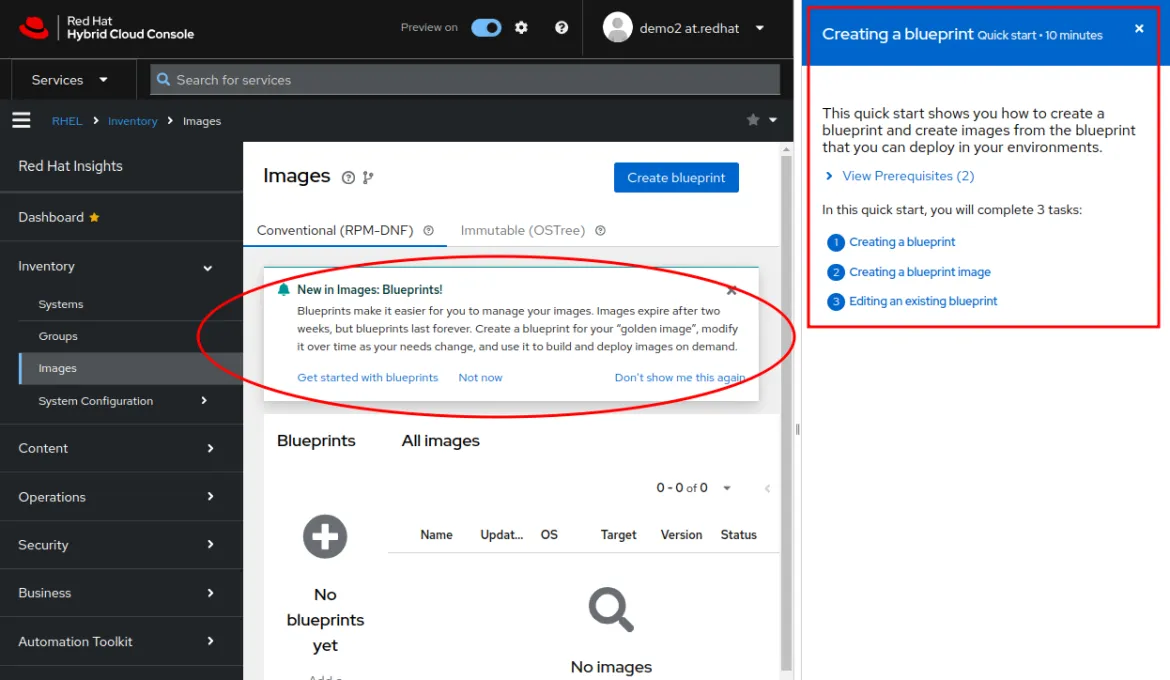
In the Images panel, there's a new Blueprints column that states No blueprints yet. To create your first blueprint, click the Create blueprint button in the top right.
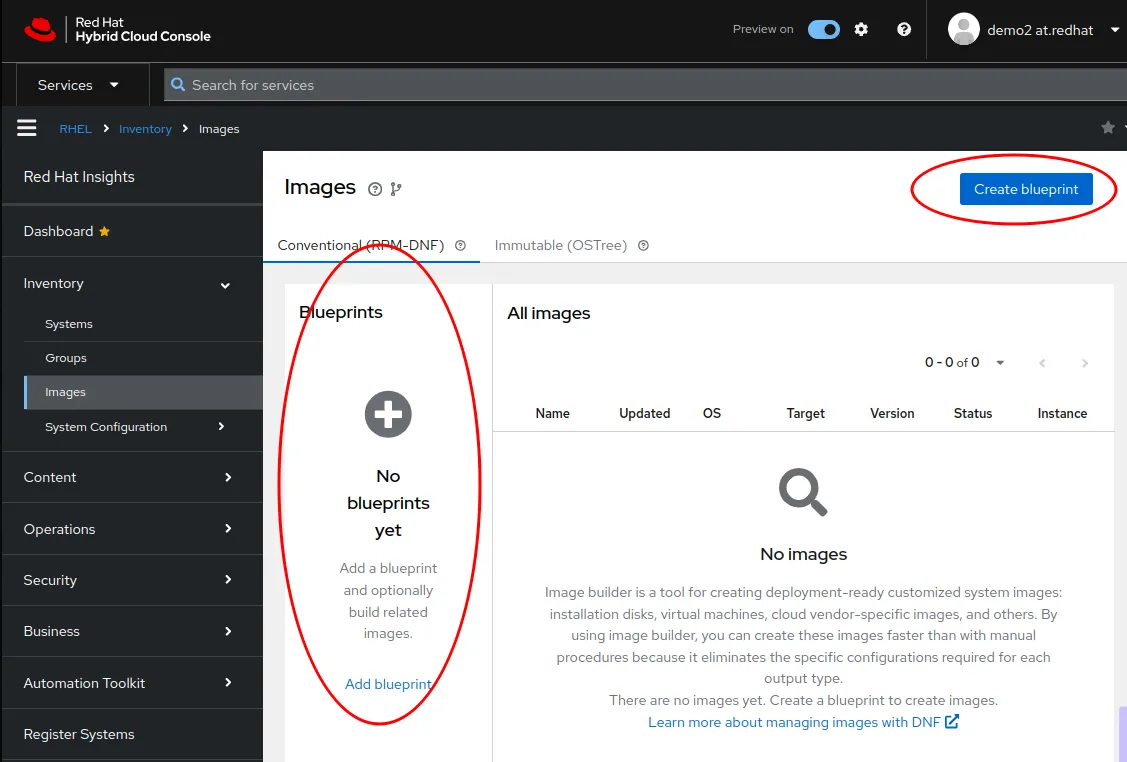
After clicking Create blueprint, you're taken through a guided blueprint creation workflow to easily build and customize RHEL. If no specific customizations or package selections are made, then this will create the equivalent of a RHEL Minimal installation but will include environment specific packages required for the environment, such as cloud-init, open-vm-tools, and similar packages. The many other options are explained in the documentation and other blog posts, so this article focuses on creating, saving, and editing a blueprint.
Near the end of the workflow, you're asked to give your blueprint a name, and an optional description.
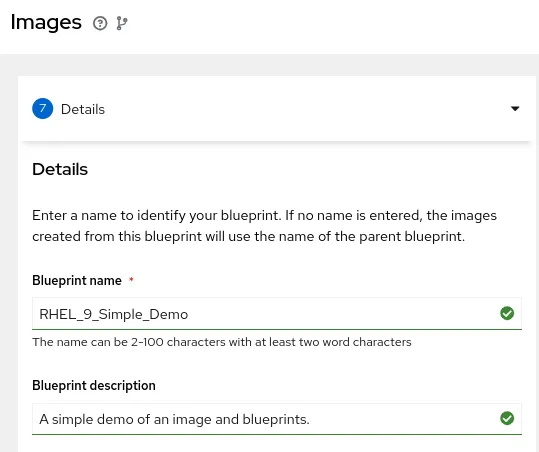
The final Review step presents you with a list of options to Create blueprint or Create blueprint and build image(s). If you're editing an existing blueprint, the workflow is identical, except the button says Save changes to blueprint instead of Create blueprint.
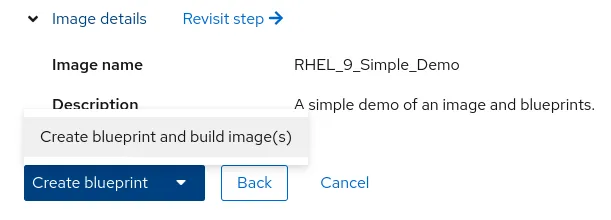
All blueprints you create are listed in the Blueprints column, and the status of any image builds are displayed in the main panel.
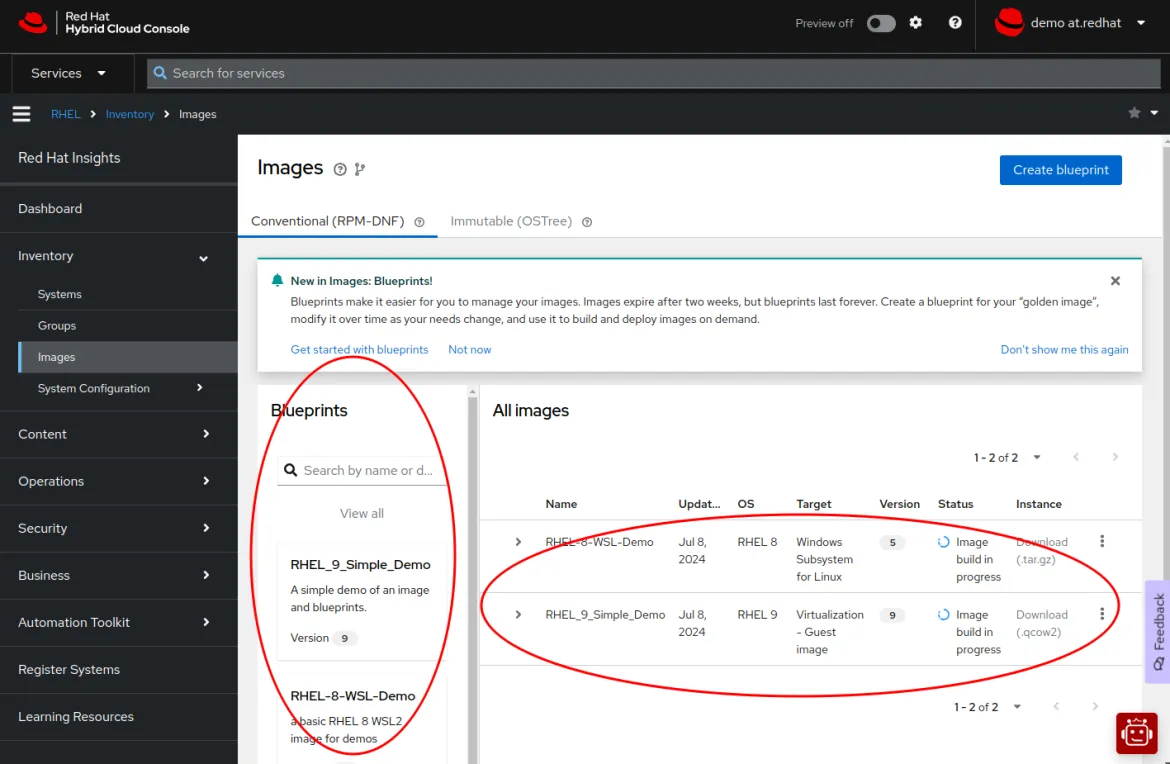
Sharing blueprints with import and export
Once you've created your first blueprints and have Preview mode enabled, you see additional options to import and export them. This allows you to share your blueprint examples with others. An exported blueprint is stored in the .json file format, and can be imported by other users into Insights image builder.
The RHEL image builder for on-premises building saves blueprints in the .toml file format. Currently these two blueprint file formats are not compatible, because the build systems provide different capabilities. In the future, we hope to merge this compatibility allowing for sharing between both versions of image builder.
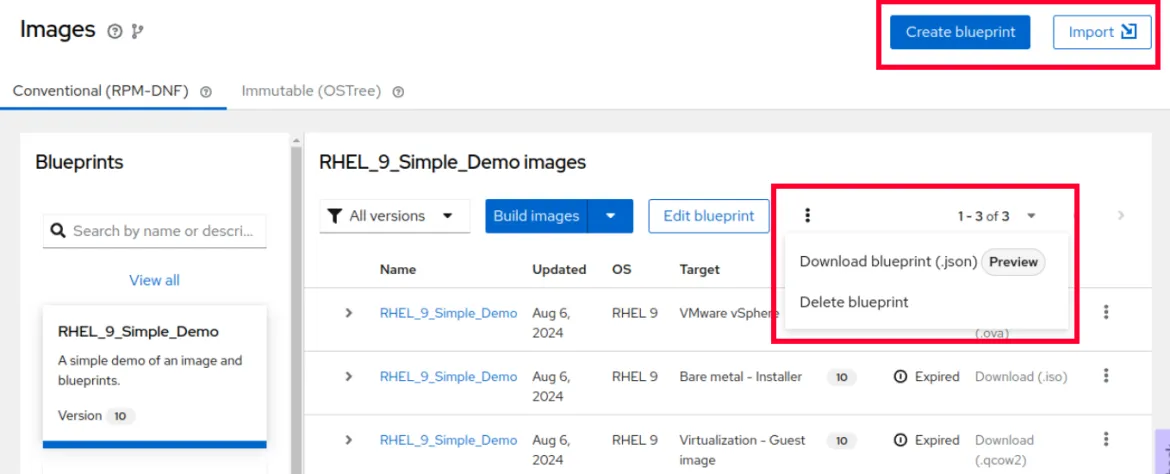
Build your own blueprints today!
The Insights image builder blueprints feature lays the foundation for many other capabilities and customizations yet to come. Check out the overview and list of latest blog posts at redhat.com/image-builder, and then go over to Insights image builder to create your own custom Blueprints and RHEL images.
Sobre el autor
Terry Bowling has been designing and working with customers on UNIX and GNU/Linux environments since 1999. He brings this experience to the RHEL Product Management team to provide the best experience to assembling and deploying RHEL for customers. This includes the RHEL installer, image builder and related build services for RHEL being developed at Console.RedHat.com.
Navegar por canal
Automatización
Las últimas novedades en la automatización de la TI para los equipos, la tecnología y los entornos
Inteligencia artificial
Descubra las actualizaciones en las plataformas que permiten a los clientes ejecutar cargas de trabajo de inteligecia artificial en cualquier lugar
Nube híbrida abierta
Vea como construimos un futuro flexible con la nube híbrida
Seguridad
Vea las últimas novedades sobre cómo reducimos los riesgos en entornos y tecnologías
Edge computing
Conozca las actualizaciones en las plataformas que simplifican las operaciones en el edge
Infraestructura
Vea las últimas novedades sobre la plataforma Linux empresarial líder en el mundo
Aplicaciones
Conozca nuestras soluciones para abordar los desafíos más complejos de las aplicaciones
Programas originales
Vea historias divertidas de creadores y líderes en tecnología empresarial
Productos
- Red Hat Enterprise Linux
- Red Hat OpenShift
- Red Hat Ansible Automation Platform
- Servicios de nube
- Ver todos los productos
Herramientas
- Training y Certificación
- Mi cuenta
- Soporte al cliente
- Recursos para desarrolladores
- Busque un partner
- Red Hat Ecosystem Catalog
- Calculador de valor Red Hat
- Documentación
Realice pruebas, compras y ventas
Comunicarse
- Comuníquese con la oficina de ventas
- Comuníquese con el servicio al cliente
- Comuníquese con Red Hat Training
- Redes sociales
Acerca de Red Hat
Somos el proveedor líder a nivel mundial de soluciones empresariales de código abierto, incluyendo Linux, cloud, contenedores y Kubernetes. Ofrecemos soluciones reforzadas, las cuales permiten que las empresas trabajen en distintas plataformas y entornos con facilidad, desde el centro de datos principal hasta el extremo de la red.
Seleccionar idioma
Red Hat legal and privacy links
- Acerca de Red Hat
- Oportunidades de empleo
- Eventos
- Sedes
- Póngase en contacto con Red Hat
- Blog de Red Hat
- Diversidad, igualdad e inclusión
- Cool Stuff Store
- Red Hat Summit

